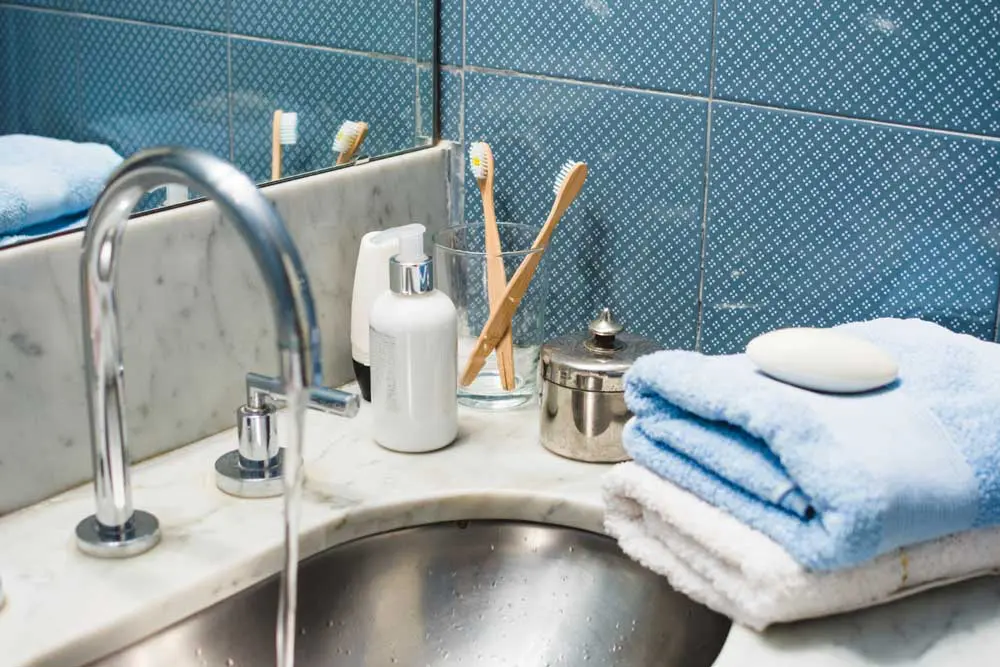Walk-in Showers vs. Bathtubs: What’s Best for You?
Walk-in Showers vs. Bathtubs: What’s Best for You?
Blog Article

Water is one of the most precious resources we have—and the bathroom is where much of it eco-friendly bathroom features gets used (and often wasted). As environmental concerns and utility costs rise, homeowners are turning to water-efficient bathroom fixtures to create more sustainable, eco-friendly bathrooms without compromising comfort or style.
From low-flow toilets to smart faucets and aerated showerheads, today’s technology allows us to save thousands of gallons each year—often without even noticing a difference in performance. But with so many options on the market, how do you know what’s worth installing?
In this in-depth guide, you’ll learn how to build a water-conscious bathroom using efficient fixtures that not only reduce your environmental footprint but also slash your monthly water bills.
Here’s What We’ll Cover:
- Key water-saving fixtures and how they work
- The environmental and financial impact of fixture upgrades
- Smart plumbing technology and automation
- Design ideas for eco-friendly, modern bathrooms
- Common myths about low-flow systems
- Practical tips for renovation or retrofitting
The Rise of Sustainable Bathroom Design
Bathrooms are undergoing a transformation—from water-wasting utilities to thoughtfully designed, sustainable retreats. Today’s homeowners aren’t just prioritizing looks; they want spaces that align with eco-conscious living. This shift has given rise to a new wave of water-efficient bathroom fixtures that combine sleek aesthetics with smart engineering.
Designers are now embracing sustainability as a creative challenge—one that involves using innovative materials, intelligent plumbing, and elegant layouts. The result? Bathrooms that are lighter on the environment but still feel luxurious and indulgent.
Stylish Water-Saving Fixtures That Don’t Sacrifice Looks
- Slimline dual-flush toilets with concealed tanks or wall-mount options
- Sculptural faucets with aerators hidden within seamless designs
- Rainfall-inspired low-flow showerheads that create a full spa-like experience
- Touchless, motion-sensor faucets in matte black or brushed gold finishes
Mixing Minimalism with Efficiency
Minimalist design naturally complements water efficiency. Clean lines, uncluttered surfaces, and multi-functional elements reduce waste while amplifying style.
Design Tips:
- Use floating vanities and wall-mounted fixtures
- Choose one large basin sink with a dual faucet
- Opt for frameless glass showers
- Select low-flow mixer taps with immediate temp balance
Low-Flow Toilets with Modern Design Features
What to Look For:
- Dual-flush systems
- Wall-hung toilets
- Compact round-front models
- Skirted bases for clean lines
Pro Tip: Look for the WaterSense label for certified performance.
Sleek Showerheads That Use Less and Do More
Key Features:
- Air-infusion technology
- Multi-spray settings
- Built-in water filtration
- Eco-timers for shower length
Matte Black, Brass & Chrome: Eco Looks Great in Every Finish
Popular Finishes:
- Matte Black: Clean and bold
- Brushed Brass: Warm and elegant
- Polished Chrome: Timeless and bright
- Brushed Nickel: Sleek and spa-inspired
Floating Vanities, Wall-Mounted Faucets & Drain Tricks
- Floating vanities improve air flow and cleaning
- Wall-mounted faucets save space and water
- Channel or slot drains are efficient and stylish
- Angled sinks reduce splash and waste
Water-Efficient Bathtubs and Wet Rooms
Efficient Bathtub Options:
- Deep soaking tubs
- Freestanding slipper tubs
- Compact Japanese-style tubs
- Dual-purpose tub-shower combos
Eco-Friendly Tile and Materials to Pair with Fixtures
Top Sustainable Materials:
- Recycled glass tiles
- Porcelain tiles
- Bamboo vanities
- Concrete sinks or counters
- Low-VOC paints and sealants
Smart Mirrors and Touchless Controls
Eco Tech Features:
- Touchless faucets (up to 70% water savings)
- Smart mirrors with usage tracking
- LED backlighting
- Timed shut-off systems
- Voice-activated controls
Biophilic Design: Nature Meets Water-Saving
How to Integrate Biophilic Elements:
- Add humidity-loving plants
- Use natural materials (bamboo, stone, wood)
- Maximize natural light
- Choose earth-tone color palettes
- Use open shelving with organic textiles
Small Space Sustainability: Half Baths Done Right
Smart Upgrades:
- Compact 1.28 GPF toilets
- Narrow sinks with aerators
- Motion-sensor faucets
- Greywater recycling (e.g., sink-to-toilet)
Case Study: A Chic, Sustainable Bathroom Renovation
Project Highlights:
- Curbless walk-in shower with 1.5 GPM head
- Wall-mounted dual-flush toilet
- Matte black faucet with aerator
- Motion-sensor mirror, bamboo vanity
- Recycled glass tile and porcelain flooring
Results:
35% drop in water bills, improved functionality, and a “peaceful, modern, and guilt-free” vibe.
The Perfect Blend: Efficiency, Design, and Function
Quick Checklist for a Sustainable Bathroom:
- Low-flow toilet
- Water-saving showerhead
- Smart faucet or touchless
- Bamboo/floating vanity
- Eco-conscious tile
- LED or motion-sensor lighting
- Natural accents and textures
Final Thoughts
The future of bathroom renovation is sustainable, stylish, and smart. By choosing water-efficient fixtures that match your design vision, you’re not just reducing waste—you’re building a space that feels better, works harder, and reflects your values.
Whether you’re starting from scratch or making small upgrades, remember: every drop counts—and with the right fixture, you’ll never have to compromise beauty for performance.
Frequently Asked Questions
Yes. Replacing older toilets, faucets, and showerheads with water-efficient models can save up to 20,000 gallons per year in a single household—without noticeable performance differences.
Not anymore. Modern low-flow showerheads use air infusion or pressure-balancing tech to maintain strong spray patterns with lower GPM rates.
You’ll notice the difference in your water bill—not your experience. Dual-flush toilets offer options for full or partial flushes, reducing waste intelligently.
Absolutely. Brands now offer WaterSense-certified fixtures in matte black, brushed brass, chrome, nickel, and more—so you can go green without losing style.
Yes. Small bathrooms may use less water, but they’re often used frequently. Even one compact, low-flow faucet or toilet can make a big difference over time.
Report this page